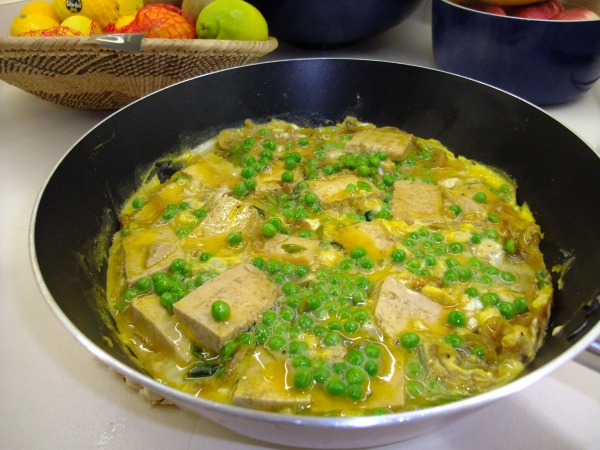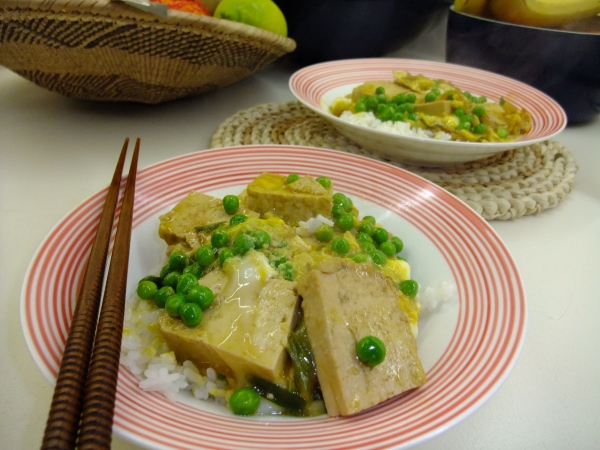Not so vegan — Japanese food night
Breakfast today– another BIG cup of coffee (have been getting up at 6am to get into work by 7:30 this week), two pieces of toast with the cashew-sundried tomato spread, thinly sliced tomatoes, salt, pepper, and dill.
Lunch– vegan pizza leftovers and same old snacky-snacks.
Dinner — My vegetarian take on Oyakodon. First of all–no, this ain’t vegan. This recipe calls for eggs–and like I said, Mark and I do eat eggs. We don’t buy them every week, and when we do buy them, we are careful of where we buy them from. We discussed eggs in depth and we both decided we feel fairly comfortable eating them as our number one concern is suffering and chickens do not suffer if you take their eggs from them. They don’t really care. But that said, the egg industry is cruel and even eggs labeled “free range” are deceptive. They want you to imagine free range chickens are all happy and frolicking through rolling green hills when the reality is quite different. Free range chickens are often still de-beaked. They may not be in cages but they may be stuffed to the gills in warehouses where a tiny door at one end of the building serves as the required “access” to the outdoors (hence earning them their free range label). Not all free range farms are like this, of course, so it just pays to do a little research to see what the free range farms are like. The best thing to look for, I’ve read, are “pasture-raised” eggs.
Our eggs come from mainly Pasture Poultry--a small local farm, and very rarely, we sometimes buy Woodland Eggs–another New Zealand farm that looks good, but we aren’t completely convinced. One time we got a dozen eggs from one of Mark’s family member’s pet chickens! I met those chickens personally, and they are happy, healthy chickens–resulting in guiltless eggs!
Anyways, Oyakodon is a traditionally made with chicken and eggs. Oyako is a Japanese word for the Parent-child relationship (hence chicken and eggs!). We make this with tofu, thinly sliced onion, and spring onions. It is also NOT traditionally made with peas and if any of my Japanese relatives saw this they might be horrified–but I thought it would taste fine and besides, I love peas. The sauce is made with seaweed stock, soy sauce, mirin, sake, and xylitol (or sugar).


I’m not horrified.(^_^.) We sometimes use peas for colour. Great contract yellow and green!
Yay!!! I KNEW they would go together! Oishikatta yo!